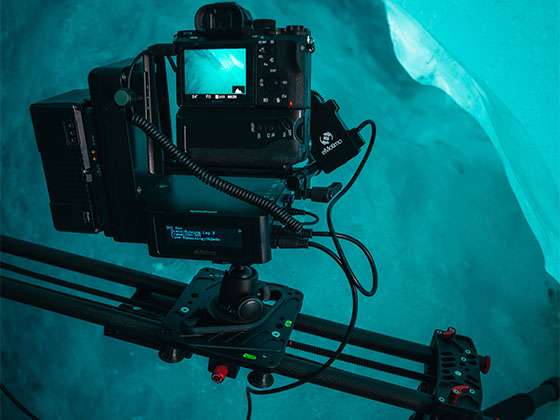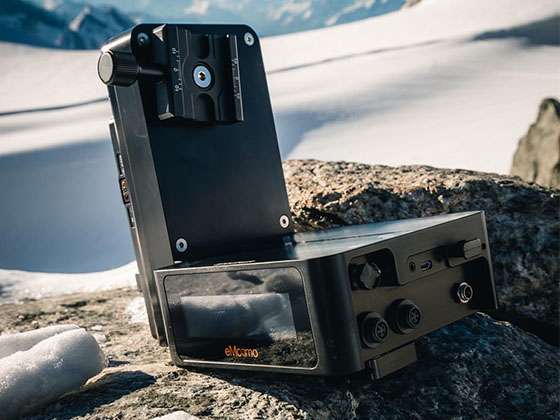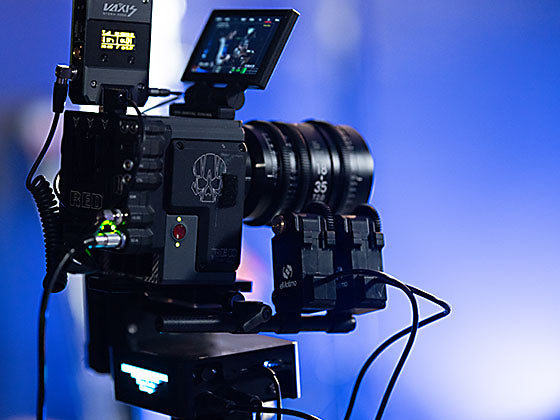News
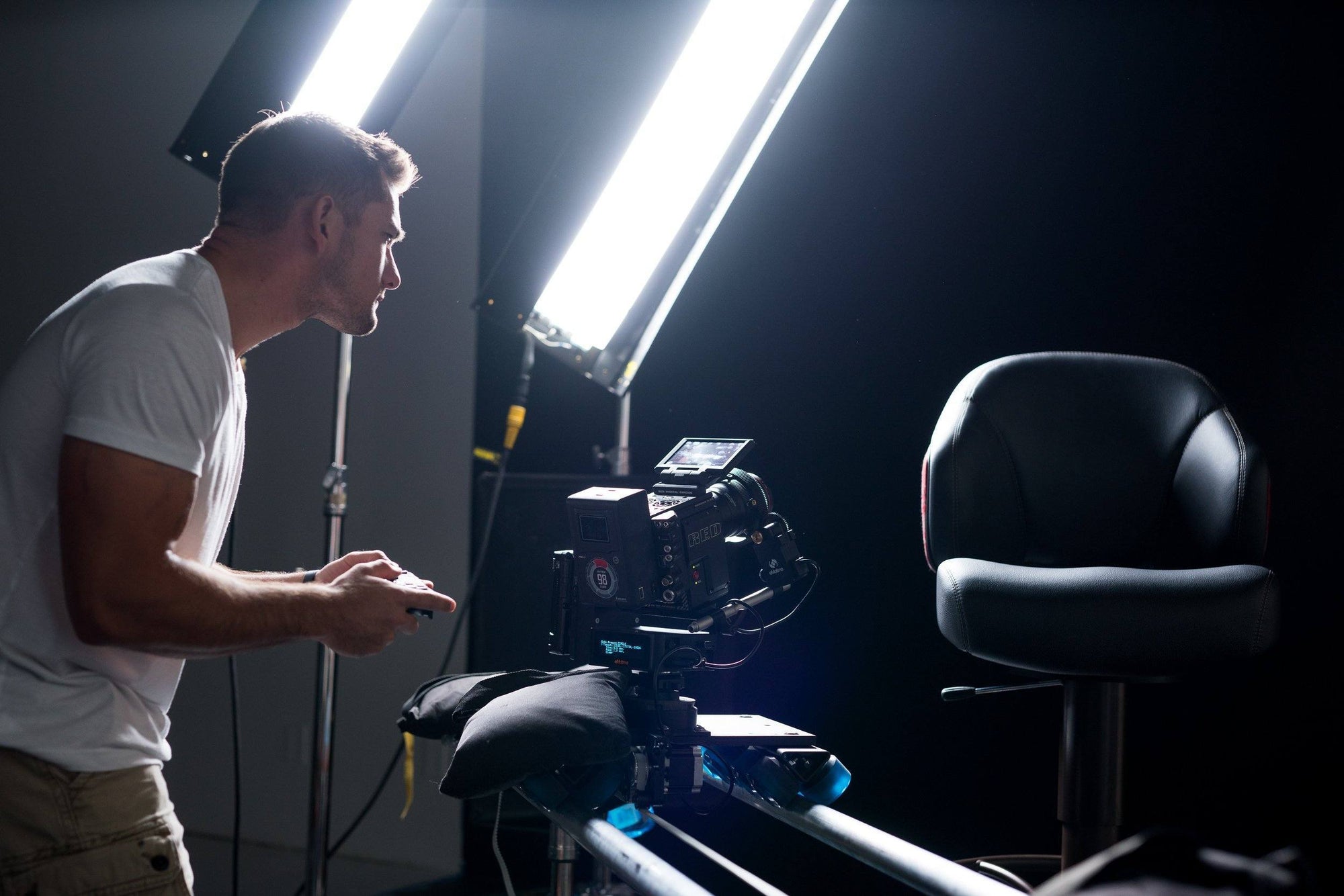
dana dolly
Making the mundane look sexy and making money while doing it.
Professional product shooters take note. This is an example of how to pay off a 4 axis motion control rig in two, half day shoots. Oh, you have fun doing it too!
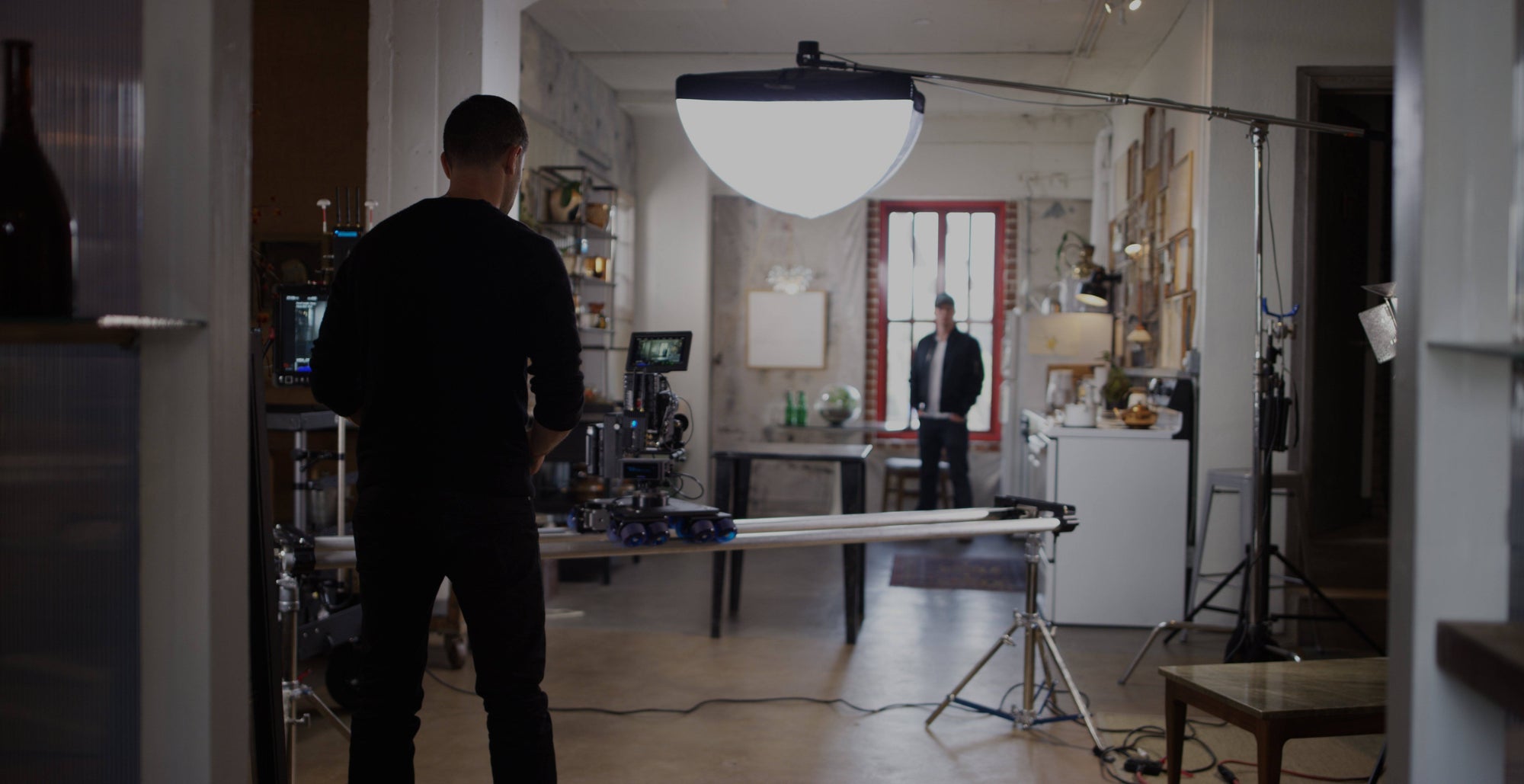
4 axis
VFX with the spectrum ST4
Create commercial quality visual effects faster, and more easily than ever with the spectrum st4.
Repeatable camera movement is a powerful tool that is only accomplished by a computer controller motion control rig. Repeating that motion perfectly, pass, after pass enables things like:
1) Closing Subjects Object removal/addition - Just like people object that differ between scenes can be removed or added over time.
2) Blending of plates with different time bases - Slightly trickier in that the various passes are run at different framerates.
Overcranked, higher-framerate passes, must be run faster (over a shorter duration)
Undercranked, lower-framerate passes must be run slower (over a longer duration)
Each of these effects are possible without motion control. The effects are easy to do with locked off cameras, but "selling" a scene is much easier when the camera is performing a natural motion.
Once you know the basic techniques and principles, you can apply them in many ways.Below is a quick first test showing off the concept.
Below a full tutorial with BTS and editing tips to pull this off.
Products Used:1) Spectrum + Dana Dolly Integration Kit
2) Dana Dolly - Original Track Ends
3) eMotimo RED SYNC Cable
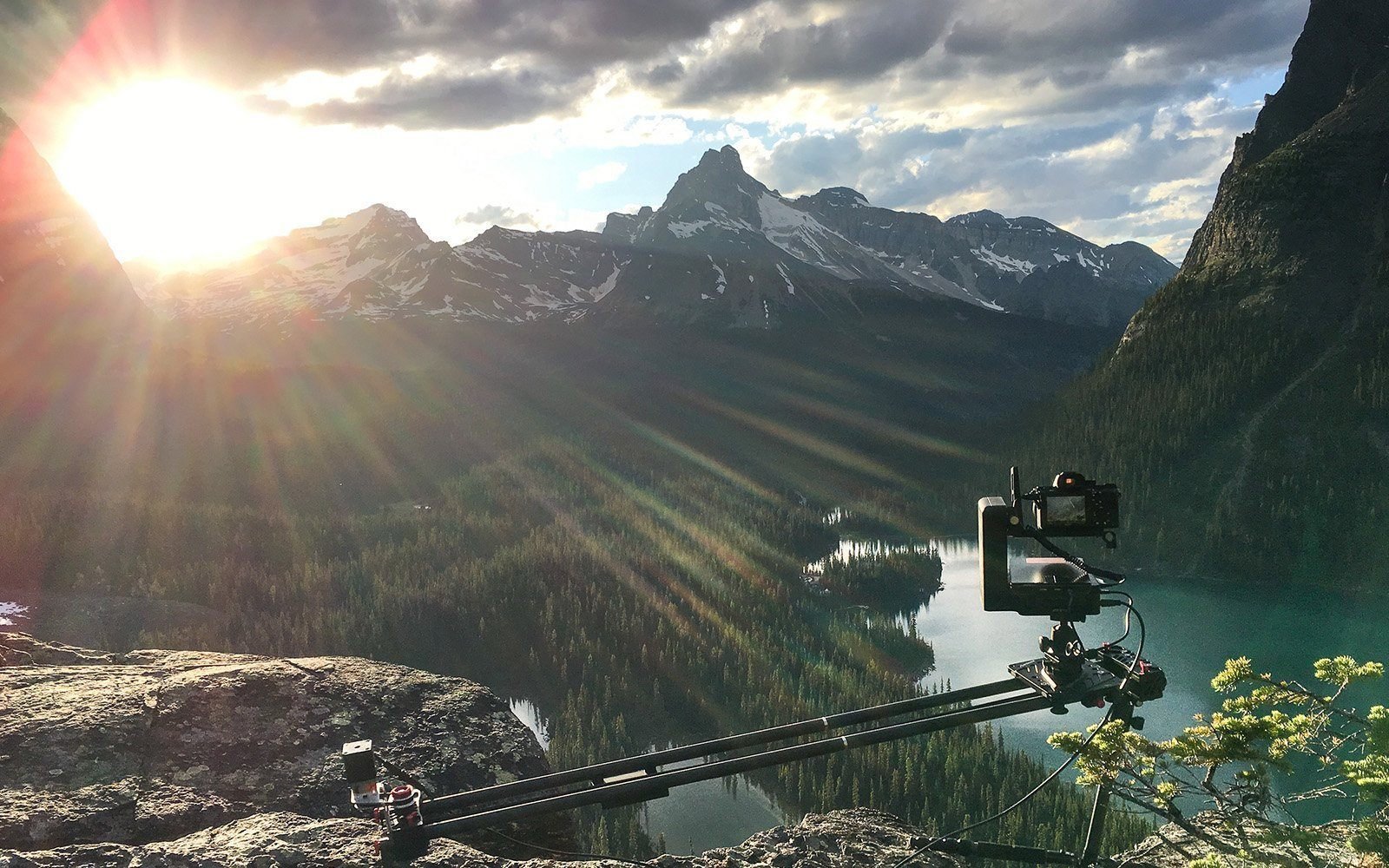
alive
Shooting 'ALIVE' with Flo Nick
Interview with the artist
ALIVE | Canada 4K from Flo Nick on Vimeo.We don't often loan out kits to unproven relationships, but with Flo reached out and told us what he wanted to do and where he wanted to do it, we put together a loaner kit for him to play with and let him roam! We didn't hear from him for a bit, but he popped back out of the wilderness and put together Alive - a Vimeo timelapse Staff Pick - pretty hard to do this days. We were impressed with his composition, storytelling, and love the last shot!
Brian: You are just coming out of school, so cash must be tight. Would you buy the spectrum run and gun kit that you used on the shoot?
Flo: This really depends on the jobs that clients will book me for in the future. If I would regularly get hired to do motion timelapse or similar camera work where the spectrum would come in useful, I could justify the costs for buying a kit. I totally fell in love with the spectrum but right now, it seems to be a little too much money to spend only for passion projects like 'ALIVE‘.
Brian: What was in your setup?
Flo:
Camera: Sony Alpha 7S Mark II
Lenses: Canon EF 16-35mm f/4L IS USM, Rokinon 14mm f/2.8, SMC Pentax-M 50mm f1.7, SMC Pentax-M 100mm f2.8, Sigma Mount Converter MC-11
Brian - How long did typical setups take you get going?
Flo - That’s really a matter of practice to quickly whip the gear out of your backpack, put the slider in the right position with your tripods and get the spectrum going. Depending on the “comfort“ of the location it took me about 3-5 min to set up the gear, however, an extra maybe 5 min if I extend the iFootage Shark slider, and up to 10 minutes to set the start and end point of the shot depending on the complexity of the desired timelapse motion.
Brian - How many locations, shots, etc
Flo - I counted approximately 50 different locations along my 6 week journey. And I shot 149 timelapse shots. Among these, 32 shots made it into the final film.
Brian - What features / functions did you most use with the eMotimo?
Flo - I mostly used the normal SMS function in order to shoot moving timelapse. By doing so, I really enjoyed setting keyframes in between to get even more control of the shot. For this final shot, though, I made use of the full potential of the spectrum. I found out about the feature, where you can repeat a programmed movement with different speeds. That allowed me to record shots in different frame rates but still have the exact same movement. So I didn’t get the idea out of my head to combine a moving timelapse shot with a real time video with both shots having the very same camera movement. In the final shot with the person (me) raising the arms, I could do exactly that. Even though it took a lot of time perfectly masking out the person in post production, this shot probably wouldn’t have been possible without the spectrum and its great feature
Brian - How much video/vs. timelapse did you shoot?
Flo - I barely shot any video because I was aware of the immense quality of the RAW photo format all my timelapse were built of. The video quality of my camera simply couldn’t compete with the RAW timelapse. As I mentioned, the only video in the final film is the mask of me raising my arms in the final shot.
Brian - After using it for 2 months, what were some of your challenges?
Flo - There are four things that come to my mind:
Sometimes I had trouble connecting the controller with the spectrum. These extra seconds or minutes can be very painful in situations where great lighting conditions are changing quickly.
Sometimes it happened that I put a lot of effort into setting up a shot before the battery pack accidentally lost connection with the spectrum. Because the power turned off, my whole programmed move was gone and I had to start all over again.
I wished there would be some sort of review option after setting up a shot. I always had to dial to the keyframe menu and had to have the camera move back and forth between the keyframes. In situations where I only used a start and end point, I even had to add a keyframe in between only to be able to check out the programmed movement on the camera screen before I have it running for hours.
The plug-ins of the wires could have some sort of protection to keep away moist, dirt or, in my case, snow. Luckily, everything survived and I could continue shooting.
eMotimo's responses to the tough stuff:
Remotes and dongles. Long connection on startup is something many users had issues with in the past. With our latest dongles we began shipping in 2018 is typically a 5 second or less process. If other users are having troubles, reach on out and pick up a new one!
Batteries - We like the portable packs for simplicity, but we love our VMount / Gold Mount options as it not only removes another wire, it more efficiently powers the spectrum for a similar sized battery. 90% of the spectrum units head out the door with a battery pack option these days.
Preview mode is valuable. It can be accomplished by setting up the move in video first, and then updating the move last minute to Timelapse. That being said, a preview mode after setting up a TL is in the works too!
Connectors - The spectrum's M3 an M4 connectors are are waterproof and sealed. Power connectors are not, but are heavy duty metal housed receptacles. All our our new motors have the same waterproof connectors on the motors for connections and don't show any wires. None have failed in the field.
Brian - What did you love about the rig?
Flo -
It comes very handy, easy to pack into your backpack.
The keyframe function. It gives you total control over your shots.
The focus pull motor is a super interesting add-on which can produce timelapse shots, barely anyone has ever seen before.
Overall product and material quality.
Very sturdy and reliable in basically any conditions.
eMotimo's responses:
Sweet!
Flo -
Overall, I’m absolutely in love with the spectrum!
A lot of people have reached out to me in the past few days asking what gear I used. That’s when I've proudly recommended the spectrum.

DIY Photography spectrum review
We love having our products reviewed. Check out what DIY photography has to say about spectrum ST4. Full review here.
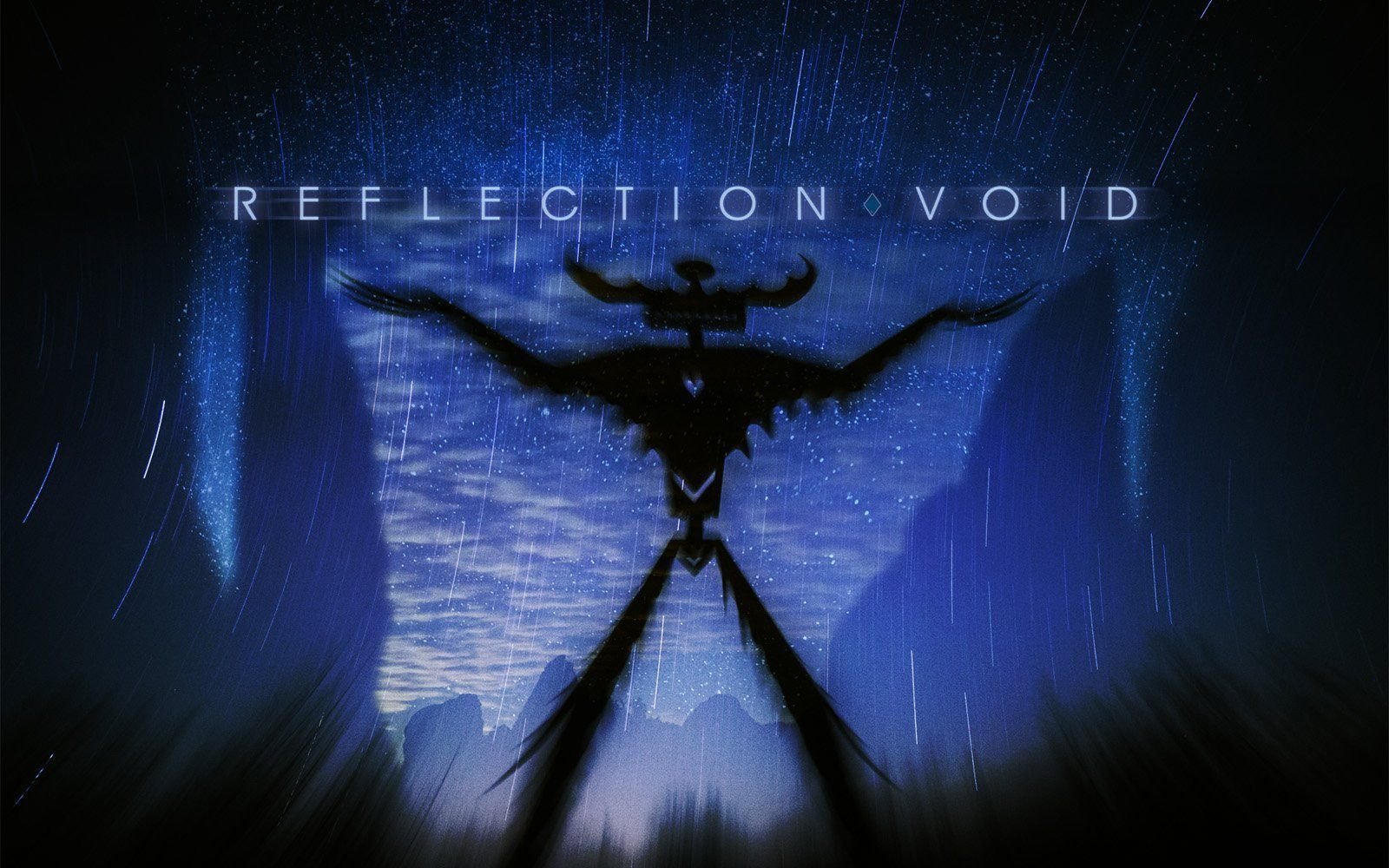
inspiration
Part timelapse, part experimental short film, part beta testing mission
ReflectionVOID is a film that pushes the aesthetics and technical boundaries of timelapse using the spectrum ST4
*Recommended: dark viewing environment / 4K or HD resolution / quality sound
Interview with the Artists: Lance Page and Jesse Clark
Q: What was the initial impulse or spark to make this film? Was it commissioned by someone?
LP: I usually have at least a couple ideas for time-lapse projects kicking around in my mind at any given time, but this one was special to me. It all started with the simple idea of shooting time-lapse into mirror reflections of the stars. After dreaming about what this mirror concept could look like for a couple years, I met Jesse, who came on as co-producer– and I finally had the support I needed to execute it. We agreed the concept had the potential to be the first of its kind, so we intended on nailing it. What really got this project off the ground was our combined inspiration that came with applying a heavy, surreal style to a strong technical idea to create a unique flavor of cinema.
(Photo credit: Stephan Knight-Jeanpierre / Vizual Jockey)
JC: The internet is saturated with timelapse content and so much of it is similar, so it’s a challenge to make something eye catching. It seemed like the perfect combination of visual elements to try out some really interesting technical ideas we had never seen before. We combined our own resources to build the project from the ground up, completely self-funding it.
(Photo credit: Stephan Knight-Jeanpierre / Vizual Jockey)
Q: We know you take pride in how you composed your visual effects. Was it all done in camera, or did you mix and match digital effects in there?
LP: The majority of our reflection effects were created in camera. We built a bunch of mirror props– clean-edged mirrors glued to plywood that we mounted out in the desert, under the stars. We did use minimal digital effects for our narrative scene, namely to composite our character’s silhouette into the time-lapse and to clean up a few shots in the scene where he discovers the ‘portal’ balancing on the rock. We also layered two motion-control passes together to remove the back of our mirror 'portal.' Besides that, all the individual 'portal' time-lapse sequences were captured using practical effects with no digital compositing.
In a way, each shot was like scouting for 3 shots. We needed to find both our camera and the mirror’s position, but also the way they relate to each other throughout the sequence. And of course adding motion control to both the camera and the mirrors made things significantly more challenging from there.
(Photo credit: Stephan Knight-Jeanpierre / Vizual Jockey)
JC: To us, these practical effects are really the meat of this project. If we had composited each of these shots digitally, the effect would be nowhere near the same. We wanted to make something that didn’t scream “hey, there’s a mirror!” all the time. Making things surreal was a matter of extensively scouting for our locations, and what you might call “reflection scouting” as well. The mirror is just adding another optical surface to the frame. The right combination of backgrounds and foregrounds– multiple horizons or multiple subjects, for example– created additional meaning for each clip we captured.
Q: What were the most challenging or unforeseen aspects of production?
LP: Due to our out-of-pocket budget, we had about one week to pull off all these shots with a limited crew. We chose the high desert geography of Joshua Tree because of its reliable night sky and surreal landscape. Our shoot week was blessed with clear skies and vibrant stars. Since we had to take advantage of each dark hour, we made sure to stagger the time-lapse setups to maximize productivity. But of course, that came at a cost. We realized pretty quickly that in order to pull it off, we had to take a break from sleeping!
(Photo credit: Stephan Knight-Jeanpierre / Vizual Jockey)
Each morning after shooting we could only nap until the sun started blasting our tents, so at that point we were up and prepping food, gear and our daily scout plans. We’d scout until we had 2 hours of daylight remaining, then would set up our first shot and aim to hit the ‘start’ button by the time the skies were dark enough. After getting our first shot started, we’d move on to the next sequence immediately, which would take another couple hours to set up and start. Then we would find a third setup to start with just enough dark sky to pull it off before the sunlight took over. The peace of mind the gear gave us during processes like these was crucial in pulling off these “do or die” shots.
JC: It required a lot of quick learning as we maneuvered around the landscape, oftentimes hand-holding the huge mounted mirrors while calling out precise adjustments by walkie talkie, sometimes hundreds of feet away. One particularly crazy shot involved zooming into three mirrors, while the camera dollied backwards in the opposite direction of the zoom. The idea was to achieve a Vertigo type shot which looked like space was compressing in front of the camera. Each mirror surface was offset and placed on the rocky landscape and had to be lined up perfectly to give the impression the mirrors were bleeding into each other. We had to check the shot about 20 times before we ended up starting the sequence in order to ensure perfect mirror placement. At that point, we were using every single stand and tripod that we hauled to the desert.
(Photo credit: Stephan Knight-Jeanpierre / Vizual Jockey)
Q: There is a lot of timelapse, but how did the video motion control come into the picture? How did the spectrum help you realize your vision?
LP: As per my usual style, I like to introduce unique elements into my time-lapse endeavors. I wanted to bring in a character to discover one of these ‘portals’ to help transition the audience into the surreal experience of the VOID. So we decided to utilize the ST4’s ‘video to time-lapse’ function to composite live action video of our character with time-lapse footage from the exact same angle. We shot the scene using natural light during the ultra-short window of twilight, then left the camera rig to roll back to start and shoot the same shot as a time-lapse all night. The two shots were processed and composited together to create Stephan’s silhouette in the 'portal' reflection. We also used the repeatable video moves to composite the close up of Stephan’s face approaching the 'portal' while masking out the rigging we had behind it.
JC: The piece was definitely conceived with motion control involved– we knew we wanted to move the camera, or the mirror, or both– to get some interesting effects. We were able to program our shot movement in a rock-solid manner, very quickly and organically (even recording multiple live passes and choosing the best one) in order to get the different plates we needed. And being able to “flip” the shot to time-lapse mode was an incredible way to mesh the different timelines of the natural landscape over the same camera move. Again, being able to quickly find, and re-find our bearings was crucial to getting the amount of shots we did in the time we had.
Q: How did eMotimo’s design of the spectrum help you achieve the shots you were looking for?
JC: I used to be a huge gamer when I was younger, so seeing the [PS4] controller was like some sort of camera dream had come true. To get to drive this thing the same way I’d drive a spaceship in a game felt right to me. Any time you can get tactile with the controls of a piece of technology it’s going to be able to get you closer to your actual goal. Whether it’s useful buttons on a camera body or a release knob placed in the perfect spot, you call fall in love with operating the gear because it actually feels good to use it. Then, those well-designed pieces actually fall away from your attention– they help you get out of your own way and see what you’re actually trying to achieve, which is the point. You see with your eye, not the camera. So if I’m setting up a shot and I can dial something in quickly on a thumb joystick, I’m gonna get excited about that.
LP: I had pushed the TB3 (eMotimo’s previous motion controller) to its very limits and even broke it a few times in the course of hauling it through inclement weather and dangerous geography. The ST4 design totally crushed those limits. With its new design and mounting system, it’s able to pull more weight and is built like a tank. In addition to the physical structure, its brain is a lot smarter than the TB3’s. Having the ability to quickly jog to each keyframe let us fine tune our reflection angles. We were also able to give each motor axis a different type of keyframe, depending on what it needs to accomplish. And since the TB3 used a Nintendo Wii remote for live control, it only makes sense that the ST4 uses a PS4 remote! With different motor drive modes, dialing in those keyframes were a breeze using the highly functional and responsive gaming remote.
Q: You got a chance to play with an early model of the Fz (focus) system while you were out there, along with a host of other experimental features that we were developing. What were you most excited to play with out there? What were some of the challenges?
JC: Just adding the 4th motor gave us a lot to play with. I got excited about the torque of the Fz because the only zooms we had weren’t geared for motor control and needed focus ring attachments. Because the unit had the power and precision, the non-cinema lenses didn’t skip or jump when moved over the course of several hours.
LP: I’d been hoping to add reliable focus control to astro time-lapse for years. Even though we were working with a 3D-printed beta version of Fz, we were ecstatic about the ability to control the lens with precision during a time-lapse. That, combined with the versatility of using keyframes and repeatable moves really opened up a world of creative possibilities. Though since many of these features were still in beta, we had to work around some kinks (hence the gaff taped Fz rig!).
We pushed the ST4 + Fz beta design as far as we could. At one point we had two ST4 units with the camera on one and the mirror on the other. The camera was panning and changing lens focus, all while the mirror was dollying and spinning on the other rig. In all honesty, due to how fatigued we were and the difficulty of the shot, we did not have high hopes. To this day, we can barely recall programming this shot– after several all-nighters, our patience was low at 3am. When we checked the shot the next morning, the ST4 nailed its marks. The camera panned with the mirror and focused back to the stars as the mirror spun and dollied away. It turned out to be one of our favorite shots!
The real challenge was not getting too excited about the technology and overlooking the creative. Without artistic intention, all the fancy toys are just toys.
Q: What are you working on currently? What's next that you can chat about?
LP: We’re actually in development on another VOID installment. This one will kick things up a notch with a powerful narrative story and a brand new landscape to reflect. We’ll be posting more about that on our Page Films and Cinematic Syndicate pages. Meanwhile, a portion of ReflectionVOID will soon be featured on Adult Swim’s “Off the Air” show on Cartoon Network!
I also have a couple exciting projects to be released in the coming months, both of which involve years of landscape time-lapse and cinema in the Cascades mountains of the Pacific Northwest and the hyper-active Kilauea Volcano in Hawaii. Stay tuned and thanks for checking out our work!
JC: We’re excited to work with Adult Swim and Cartoon Network– we’re huge fans of course. The opportunity to air some of this film on late-night television makes me stoked. Lance and I just spent time in the Ochoco National National Forest capturing the recent total solar eclipse. We're currently reaching out to filmmakers and directors who might need the footage in their productions.
As for other projects, I’m about to release a short film I wrote and shot a year ago, I’m currently focused on cinematography work, shooting films and music videos here in Portland, and prepping for some stop-motion shoots for the colder months. I’m excited to live in such a hub of timelapse and stop-motion folks up here. Working with practical effects has always been important to me, so I’m excited to produce another installment of our VOID films with Lance.
Watch the full behind the scenes video below:
● See more of Lance’s work at PageFilms.com and his Instagram
● See more of Jesse’s work at CinematicSyndicate.com and his Instagram
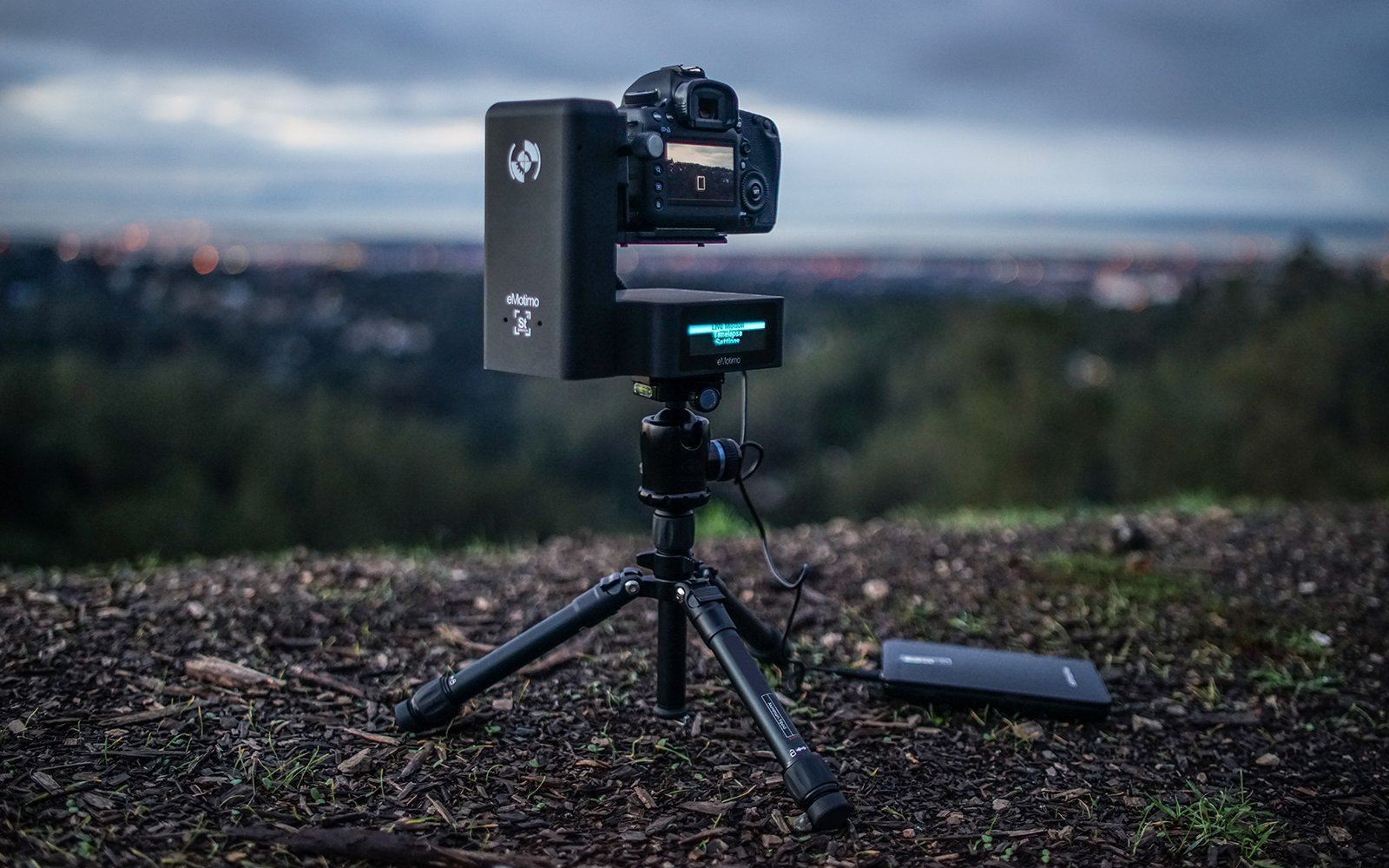
Backlight
spectrum ST4 : Backlight
During long exposure nighttime shots, blocking out any unwanted light is very important. We understand that and we’ve put in new brightness settings on spectrum ST4 to help with that.
The eMotimo spectrum ST4 is a 4-axis motion controller with pan and tilt built in. It integrates and drives 2 additional powered axis like slide and focus. It is controlled by either the included wireless gaming remote, or the navigation joystick on the side of the unit.More info: emotimo.com/spectrum
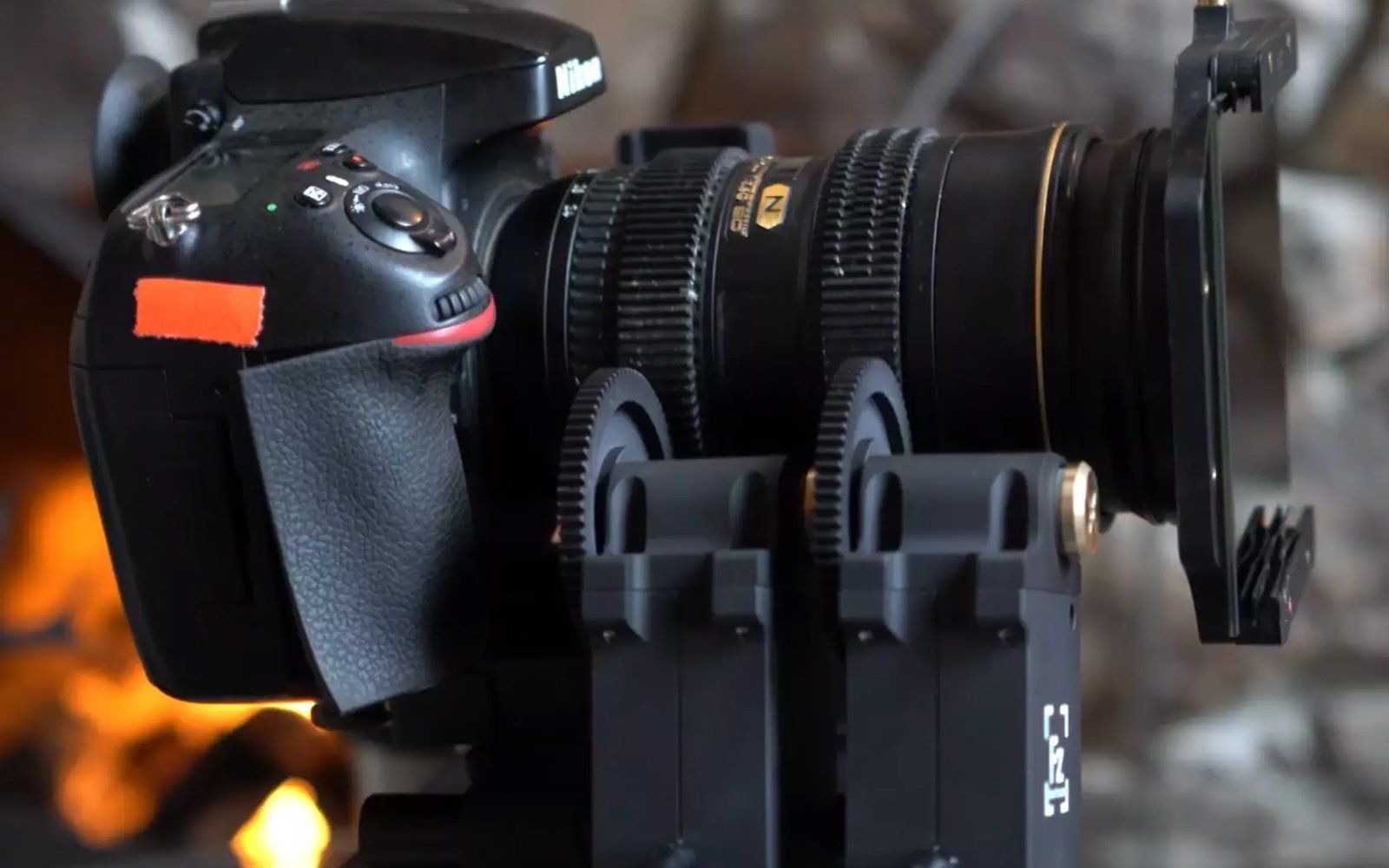
Focus
Focus Iris Zoom
Focus zoom from eMotimo on Vimeo.
4-axis move tests with the eMotimo spectrumST4 and two Fz motors – pan, tilt, focus, and zoom all controlled simultaneously with the wireless gaming controller.
The eMotimo spectrum st4 is a 4-axis motion controller with pan and tilt built-in. It is meant for cameras 15 lbs and lower. It integrates and drives 2 additional powered axis like slide and focus. It is controlled by either the included wireless gaming remote, or the navigation joystick on the side of the unit. More info:emotimo.com/spectrumStore: store.emotimo.com/spectrum-st4-p110.aspx
For this video, the eMotimo spectrum st4 was paired to an iFootage Shark S1 slider in the above video enabling 3 axis (pan,tilt,slide). You can find more information about this slider or purchase the bundle.More info: emotimo.com/ifootage/Store: store.emotimo.com/spectrum-st4--shark-bundle-p121.aspx
Other instructional videos for the spectrum st4 are out here vimeopro.com/emotimo/spectrum-instructional-videos

Controller
FZ with R2 & L2
With the spectrum ST4, it’s easy to control all 4 axis of motion at the same time. This video specifically demonstrates how to control your focus Fz axis.The eMotimo spectrum st4 is a 4-axis motion controller with pan and tilt built in. It integrates and drives 2 additional powered axis like slide and focus. It is controlled by either the included wireless gaming remote, or the navigation joystick on the side of the unit.More info: emotimo.com/spectrumStore: store.emotimo.com/spectrum-st4-p110.aspx
spectrum ST4: Controlling Fz R2 L2 from eMotimo on Vimeo.


